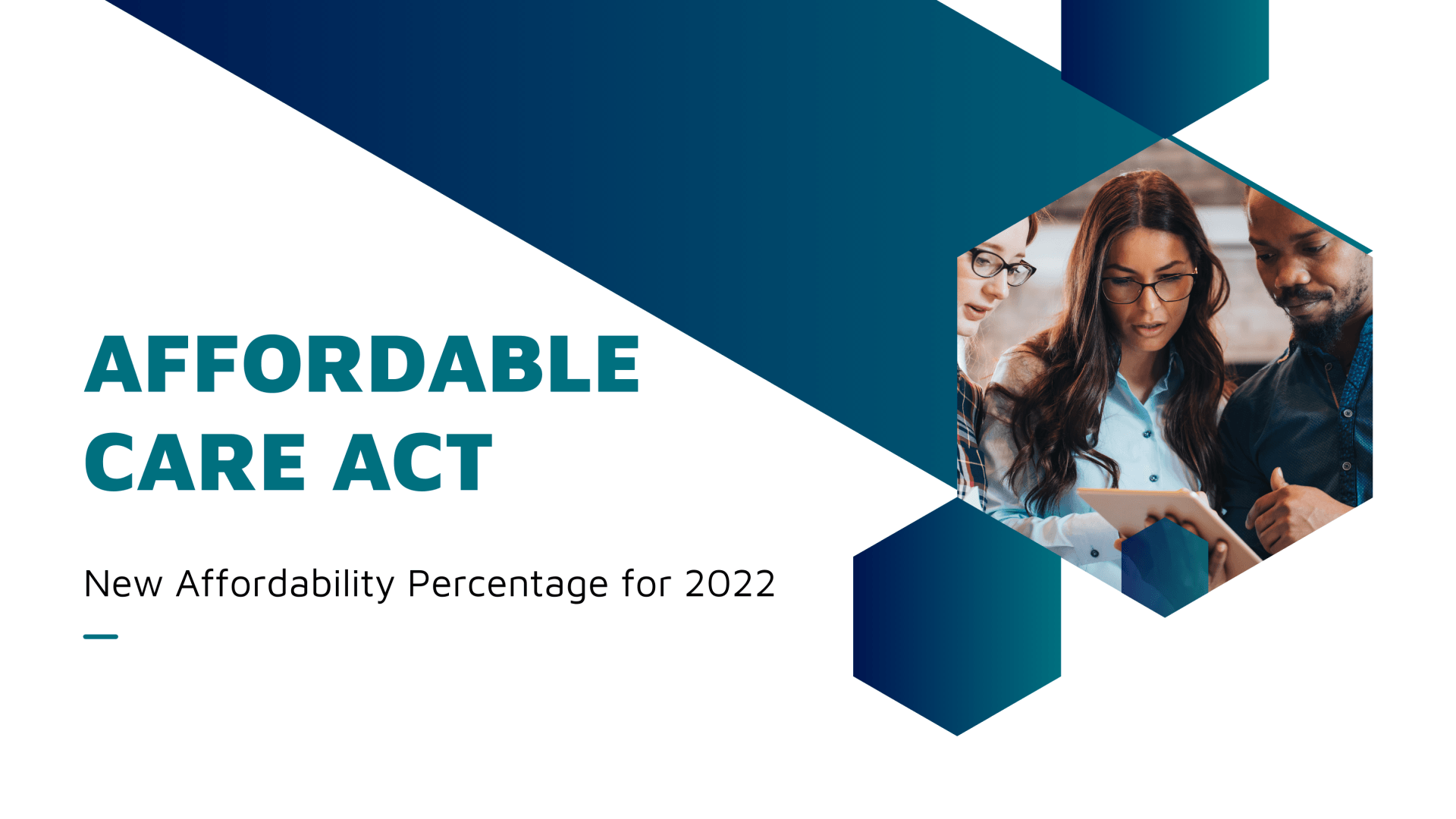
The IRS recently issued the Revenue Procedure 2021-2036 to index the updated contribution amounts in 2022 for determining affordability of an employer’s group health plan under the Affordable Care Act. If you are an employer with 50 or more full time or full-time equivalent employees, there is a new percentage of affordability to follow.
Affordability Percentage for 2022
For plan years beginning in 2022, employer-sponsored group health coverage will be considered affordable if the required amount paid by the employee, for self-only coverage, does not exceed 9.61% of the employee’s household income for the year. This is a significant decrease from the current affordability in 2021. The current percentage is 9.83% and as a result, some employers are able to lower their contribution for 2022 or if your renewing medical plans have an increase, release at least some of that burden.
If you are an applicable large employer, it is important to communicate to your employees what you are offering for 2022 and how the affordability is calculated. Under the Affordable Care Act, employees who are eligible under an employer sponsored plan that meet all requirements of the ACA, are generally not eligible for the premium tax credit. The ACA employer-shared responsibility penalty is triggered when a full-time employee receives that premium tax credit for coverage under an Exchange, such as the New York State of Health. This means that if a full-time employee enrolls into a plan through the Exchange or Marketplace, you may be audited in future years with the need to prove you did in fact offer adequate and affordable coverage to that specific employee as well as all other eligible employees.
The affordability percentage that employers have been required to pay has been ongoing since 2015. Here is a look back at the contribution percentage adjustments:
- 9.56% for the 2015 plan year
- 9.66% for the 2016 plan year
- 9.69% for the 2017 plan year
- 9.56% for the 2018 plan year
- 9.86% for the 2019 plan year
- 9.78% for the 2020 plan year
- 9.83% for the 2021 plan year
Some Options to Consider
A lower percentage has a positive impact on applicable large employer groups because that indicates the employee can take on more of the monthly premium cost which in turn means the employer does not need to contribute as much towards that premium. If groups want to continue to contribute at a higher amount, that is perfectly fine! Or, that savings in contribution towards the medical plan can always be used towards another employee benefit.
If the employer is lowering their monthly contribution in 2022, those funds could be redirected towards employee benefits in a multitude of ways. Depending on your plan offerings, a Health Savings Account, a Health Reimbursement Account, or a Flexible Spending Account could be offered; and the employer can contribute towards those accounts. Another route to take could be expanding your selection of benefits being offered. There are many valuable lines of coverages that employees value but not all employers offer. A few popular plans that employers offer include:
- Dental
- Vision
- Employer Paid Life
- Employer Paid Short Term Disability
- Employer Paid Long Term Disability
- Cancer
- Accident
With the new 2022 affordability percentage being lowered, it allows employers to potentially utilize those savings and give back to their employees in different ways. If you have questions related to the Affordable Care Act requirements or how to add on additional coverage options for employees, please feel free to contact SimcoHR today.
Sign up for our newsletter.




